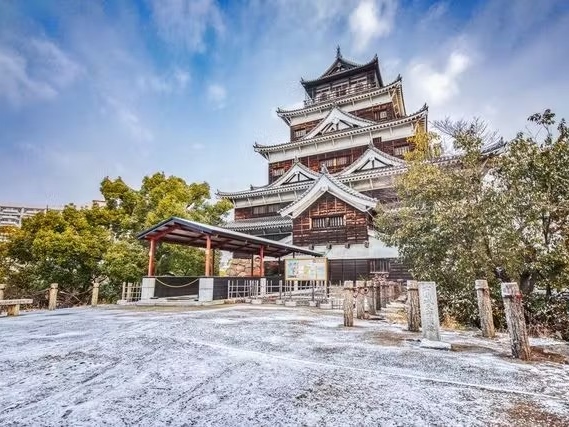
Hiroshima Castle
- Step into a 16th-century castle, built amidst Japan's golden Azuchi-Momoyama era
- Experience the legacy of powerful samurai clans, especially the Asano, who called this castle home for centuries
- Capture breathtaking panoramic views of modern Hiroshima from the castle's top floor, a perfect photo opportunity
Options
Admission tickets
Inclusions
Admission to attractions
Exclusions
Other personal expenses
Tips and gratuities
Additional Info
Free for children aged 0-15
Senior visitors will be asked to verify their age when purchasing tickets. Please present an official ID (driver's license, insurance card, etc.) or a health and welfare handbook for the elderly at the reception desk
High school students are those enrolled in high schools, secondary education schools (later stages), special support schools (high school divisions), and others aged between the day after their 15th birthday and March 31st after their 18th birthday
High school students can enter for free on the following dates:
July 2025: 5th (Sat), 12th (Sat), 19th (Sat)
August 2025: None
September 2025: 6th (Sat), 13th (Sat), 20th (Sat), 27th (Sat)
October 2025: 4th (Sat), 11th (Sat), 18th (Sat), 25th (Sat)
November 2025: 1st (Sat), 3rd (Mon, public holiday), 8th (Sat), 15th (Sat), 22nd (Sat), 29th (Sat)
December 2025: 6th (Sat), 13th (Sat), 20th (Sat)
January 2026: 10th (Sat), 17th (Sat), 24th (Sat), 31st (Sat)
February 2026: 7th (Sat), 14th (Sat), 21st (Sat), 28th (Sat)
March 2026: 7th (Sat), 14th (Sat), 21st (Sat)
There is no parking lot on the castle grounds, so please use the public parking lots nearby. There is a flat parking lot in Sannomaru, Hiroshima Castle, that can accommodate 67 cars and is open 24 hours a day
Group Discount: Groups of 30 or more are eligible for discounts. Please contact the facility directly for inquiries
Admission Fee Exemption: Admission is free for individuals presenting a physical disability certificate, rehabilitation certificate, mental disability health and welfare certificate, war wounded/sick certificate, specified disease medical care recipient certificate, designated intractable disease medical care recipient certificate, congenital blood coagulation factor disorder medical care recipient certificate, or pediatric chronic specified disease medical care recipient certificate, atomic bomb survivor badge, international student ID at the reception desk. Admission is also free for school groups up to high school level and groups from social welfare facilities with prior application. Please refer to the "Admission Fee Exemption (Free)" section on the Hiroshima Castle website for more details
Visitors can use the slope within the historical site to reach the base of the stairs in front of the castle tower. All ascents and descents within the castle tower from the base of the stairs are by stairs. Wheelchair access is difficult for entry and movement between floors (assistance is required). The first and second floors are relatively spacious and can be viewed while in a wheelchair. The third floor and above are very narrow, making wheelchair access difficult
One wheelchair is available for use on each of the first and second floors. Reservations are not accepted
There are no restrooms inside the castle tower. Please use the restrooms within the historical park
Pets are allowed inside carriers where they are completely out of sight. Service dogs are allowed entry
Photography is for personal use only. Please refrain from using flash, selfie sticks, tripods, capturing other visitors in your shots, or broadcasting with a loud voice. Please note that photography is prohibited in some areas
Eating and drinking are prohibited inside the castle tower to protect the exhibits and ensure visitor safety. There are no designated eating areas
Reservations are not required for general groups, but it is helpful to inform us of large groups in advance to avoid conflicts with other groups. School groups should submit an exemption application form, which will serve as their reservation
The castle tower can be viewed in about 30 minutes to 1 hour. The restored Ninomaru buildings within the historical site, about a 5-minute walk from the castle tower, can be viewed in about 15 to 20 minutes
What's included in Hiroshima Castle
(Subject to Option Inclusions)
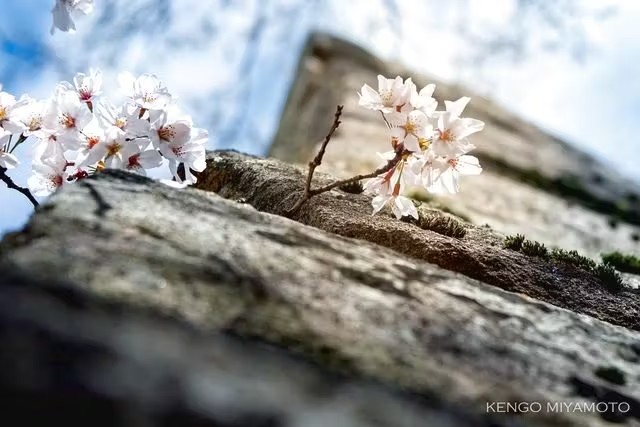
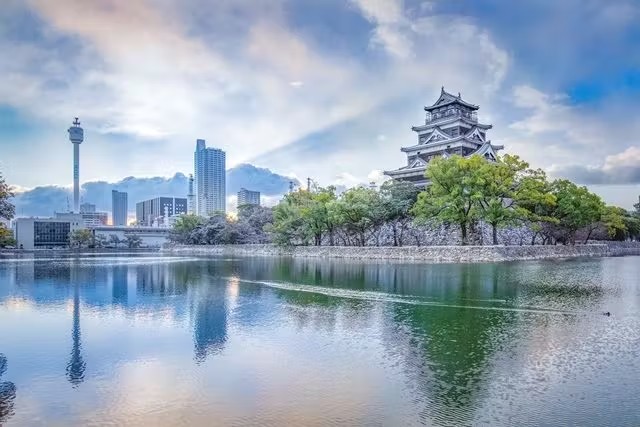
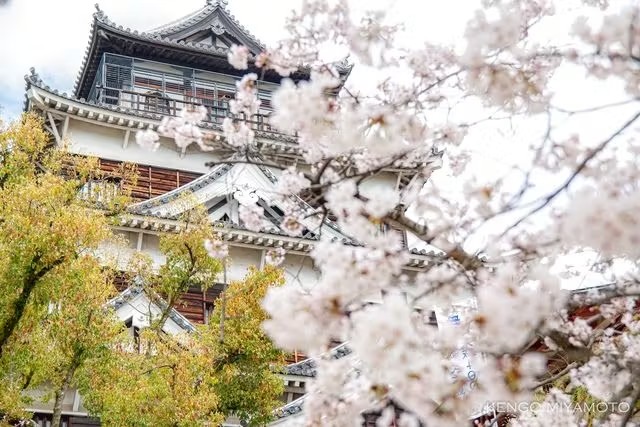
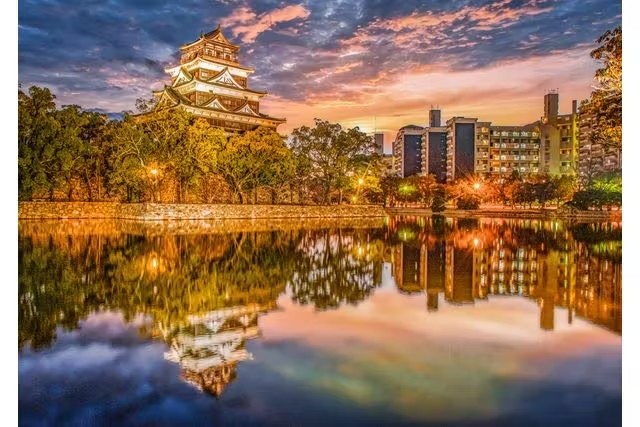
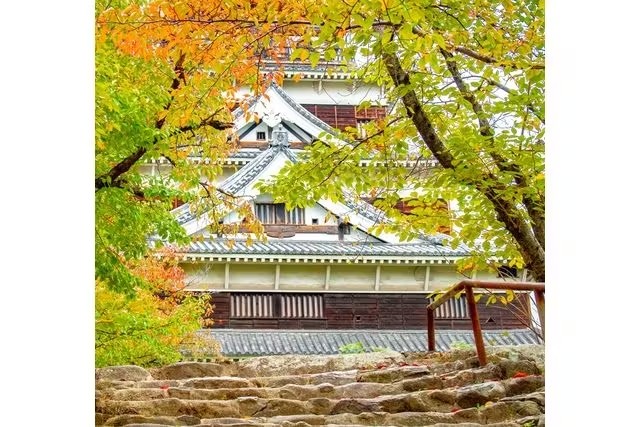
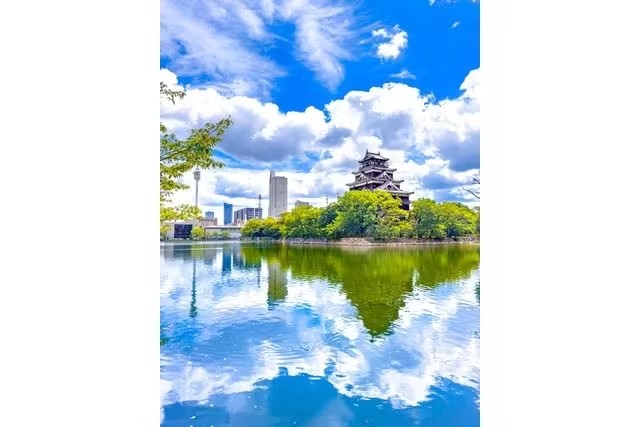
Our Favourites
The Azuchi-Momoyama period, when a magnificent culture flourished. Construction was started in 1598 by the warlord Mōri Terumoto. In the Edo period, Fukushima Masanori entered the castle in 1600. After Asano Nagaakira entered the castle in 1619, it became the residence of the Asano clan for 12 generations. In the past, it was a grand castle centered on a five-story main keep, with three-story south and east minor keeps connected by a connecting turret. Although some of the keeps and buildings remained after the Meiji era, all the buildings were destroyed by the atomic bomb. The current main keep was restored in appearance in 1958 and is now a history museum introducing Hiroshima's history and samurai culture. From the observation room on the 5th floor, you can see the city center and enjoy cherry blossoms in spring. In the vicinity, there are also the restored buildings of the Ninomaru (free admission), Hiroshima Castle Sannomaru (opening in March 2025) with dining establishments, the scenic Shukkei-en Garden, and Edion Peace Wing Hiroshima.
Route
How to get there
By bus: About 12 minutes on foot form Hiroshima Bus Center
By bus: For those coming by Hiroshima Tourist Loop Bus "Maple Loop" Orange Route/Lemon Route About 6 minutes on foot from Hiroshima Castle (Gokoku Jinja-mae) stop
By train: About 17 minutes on foot from JR Shin-Hakushima Station
By train: About 25 minutes on foot from JR Hiroshima Station
By train: About 15 minutes on foot from Kamiyacho East/Kamiyacho West tram stops on Hiroshima Electric Railway Streetcar
By train: About 12 minutes on foot from Kencho-mae Station/Johoku Station on Astram Line
By train: About 17 minutes on foot from Shin-Hakushima Station, on Astram Line
By car: About 20 minutes from Hiroshima IC on the Sanyo Expressway
Meet
Venues
- Hiroshima Castle
- Hiroshima Castle 21 1 Motomachi Naka Ku Hiroshima City Hiroshima Prefecture〒 730 0011 Please Refer To The Map Https Maps App Goo Gl Xp Vi A 81 ZZN Wzfr MDA For Assistance


